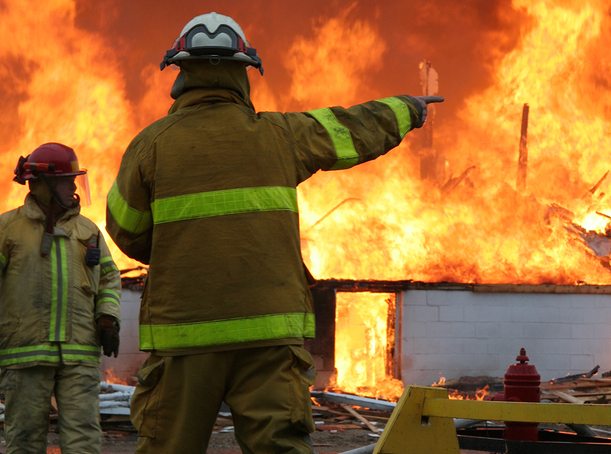Don’t wait until you actually have a fire on-site to start your fight against fire. Use the following tips help keep construction sites free from the threat of fire:
- No smoking – have and enforce a no smoking policy on the construction site.
- Loss control plan – the written loss control plan should comprehensively address the risks of fire exposure and include specific objectives to be enforced by management on the job site, general safety measures, and a named person to be in charge of on-site safety coordination.
- Inspections and logs – project managers should do daily on-site inspections of all materials and equipment, the work area, and any other nearby location with potential hazards. A running log should be kept of these daily inspections.
- Hot works – cutting, brazing, welding, and other hot works operations should have a person designated to observe the working area, as well as areas adjacent to it. The person should maintain a line of sight and watch combustible products, sparks, and slag. The surrounding areas should be inspected for a minimum of 30 minutes after the hot works operation ceases.
- Portable heating equipment – place all portable heating equipment on non-combustive platforms or flooring. Use recognized standards and/or the manufacturer’s specifications for ensuring the appropriate maintenance, fueling, and clearance.
- Enclosures – construct temporary enclosures with designated paths for transporting materials. For the best results, only construct the temporary enclosure with non-combustible approved materials and locate it away from overhead exposures.
- Flammable materials – the labeling and identification requirements of gas and flammable liquid containers should be reviewed carefully before they’re brought on the construction site. Make sure that safe storage areas for flammables have been clearly designated and that the area includes surrounding barriers and signs.
- Firefighting equipment – keep firefighting equipment on-site and easily available at all times. The project manager should ensure that there is always a reliable water supply available for the equipment to connect to and that the equipment will adapt to local fire department equipment if necessary.
- Rooftops – roof vents should be adequately cleaned to decrease sources of ignition like lint. Additionally, a minimum of one portable fire extinguisher should be located at-level during rooftop operations. Make sure the extinguisher has sufficient capacity for the fire risk.



